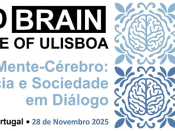Por Patrícia Faísca (Bio-PhysNano | BioISI/FCUL).
Protein β2-microglobulin is the causing agent of two amyloidosis: dialysis related amyloidosis (DRA), affecting the bones and cartilages of (>700K) individuals worldwide with chronic renal failure undergoing long-term hemodialysis, and a fatal systemic amyloidosis, found in one French family, which impairs visceral organs. The protein’s small size and its biomedical significance attracted the attention of theoretical scientists and there are now several studies addressing its aggregation mechanism in the context of molecular simulations. In particular, we have been focusing on the early phase of β2-microglobulin aggregation through the identification, and structural characterization, of monomers with the ability to trigger aggregation, and initial small oligomers formed in the so-called nucleation phase. In this seminar I will overview some of our recent results and integrate our findings with those coming from in vitro experiments to provide a broader perspective of this research theme.
Transmissão em direto via Zoom.





















